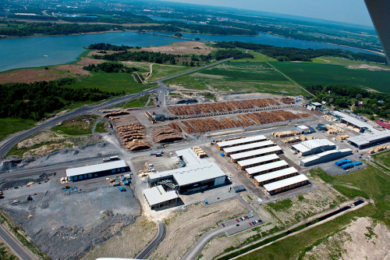An intergovernmental report on climate change released late last week highlights the need for a whole-of-landscape approach to tackling climate change, and the vital role the agriculture and forestry sector can play in reducing emissions and storing carbon, according to Climate Proofing Australia (CPA). Source: Timberbiz
The CPA is pleased to see that the Intergovernmental Panel on Climate Change’s recommendations are consistent with its call on the Australian Government to better target the Climate Solutions Fund (formerly the Emissions Reduction Fund) to incentivise carbon projects from the agriculture and forestry sectors that deliver the co-benefits of biodiversity, productivity, water quality and landholders and employment.
“The Fund’s current conditions limit the land sector’s capacity to generate co-benefits associated with carbon sequestration, such as reinstating wildlife habitat, supporting sustainable agriculture, increasing the plantation forestry estate, and cleaner waters in our rivers,” Australian Forest Products Association CEO Ross Hampton said.
“This next phase of the Fund is an opportunity to address these barriers and make it more accessible to primary industries and landowners.”
Mr Hampton said the IPCC Special Report backs Australia’s forest industries to help fight climate change.
“This latest IPCC report is further evidence that Australia’s forest management practices of sustainable harvest and regeneration are as good as anywhere in the world when it comes to emissions reduction and carbon mitigation benefits. It is better for the environment to have well managed multiple-use forests that continue to produce renewable forest products that store carbon and bioproducts that substitute for fossil fuels-based alternatives, than to lock forests up,” Mr Hampton said.
Greening Australia CEO Mr Brendan Foran said that with land-based activities also accounting for around 20 per cent of the country’s greenhouse gas emissions, carbon farming presents a really important opportunity not just to reduce these emissions, but to improve the landscape at the same time.
“A strengthened CFI and the introduction of ‘premium credits’ will mean that large-scale tree plantings can also achieve important co-benefits, such as reinstating wildlife habitat, supporting sustainable agriculture and cleaner waters in our rivers.”
CPA reiterated its call on the Federal Government to commit a proportion of the Climate Solutions Fund to projects that deliver multiple benefits, and to remove barriers to the Fund that currently limit opportunities for the agriculture and forestry sectors.
The latest IPCC report states:
Sustainable forest management aimed at providing timber, fibre, biomass, non-timber resources and other ecosystem functions and services, can lower GHG emissions and can contribute to adaptation. B5.3.
Sustainable forest management can maintain or enhance forest carbon stocks, and can maintain forest carbon sinks, including by transferring carbon to wood products, thus addressing the issue of sink saturation…Where wood carbon is transferred to harvested wood products, these can store carbon over the long-term and can substitute for emissions-intensive materials reducing emissions in other sectors. B5.4.
Most mitigation pathways include substantial deployment of bioenergy technologies. B7.4.
The use of residues and organic waste as bioenergy feedstock can mitigate land use change pressures associated with bioenergy deployment. B3.3.
Photo: Australian Forest Products Association CEO Ross Hampton







